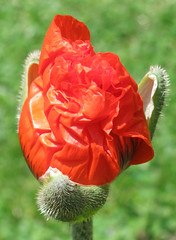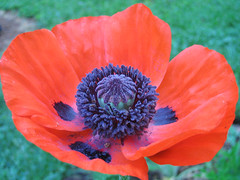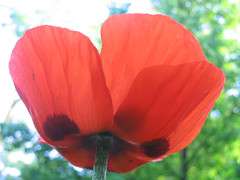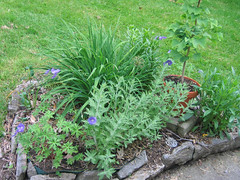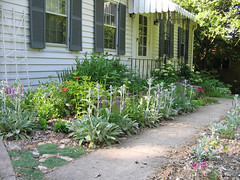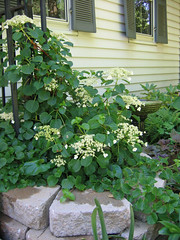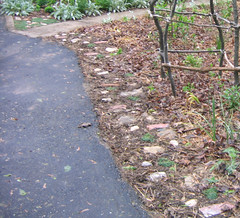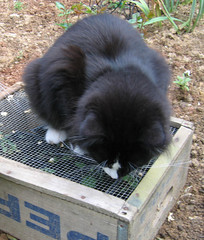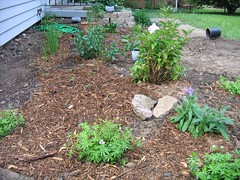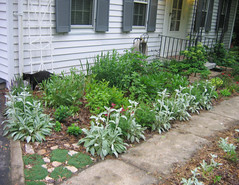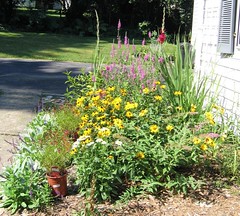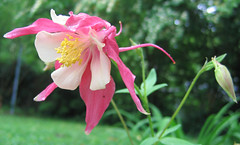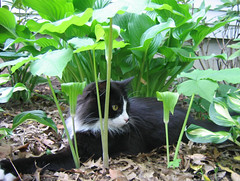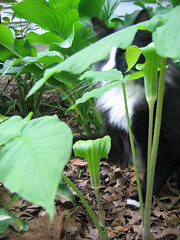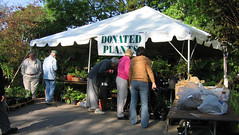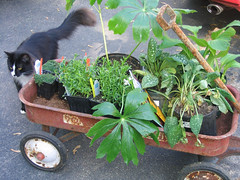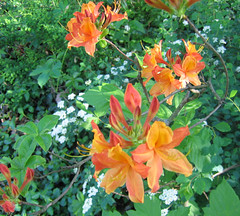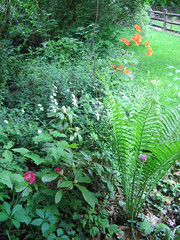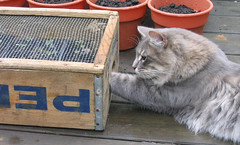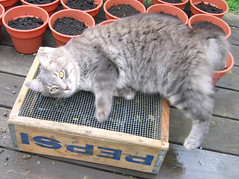Flower Fashion
Green pants. I’m obsessed with wearing green pants in the garden. I have no fewer than three pairs of green gardening pants. (Technically, the third pair are capris.) I’m not sure why it is so important to me to wear green pants, but they just feel RIGHT. Color aside, I like pants for kneeling on concrete and holly leaves. Lately, in deference to the heat, I’ve been forgoing the protection of pants for comfort of shorts. Unfortunately, I have no green shorts, but I’m looking.
 Farmer tan. Obviously, I’m fair skinned, but I am willing to risk a little melanoma to prevent a farmer tan. I picked up a few packages of A-shirts (a.k.a. wife-beaters) and they are my new favorite gardening shirts. Not only do they bare my shoulders to the sun, but the long length (because them are men’s shirts) covers the gardener’s crack exposed by my low-riding green pants.
Farmer tan. Obviously, I’m fair skinned, but I am willing to risk a little melanoma to prevent a farmer tan. I picked up a few packages of A-shirts (a.k.a. wife-beaters) and they are my new favorite gardening shirts. Not only do they bare my shoulders to the sun, but the long length (because them are men’s shirts) covers the gardener’s crack exposed by my low-riding green pants.Over-the-shoulder boulder holder. I haven’t got much in the way of shoulders (or boulders for that matter!) so I’m one of those women you see constantly hitching up her bra straps. I spent last season with my dirty hands down my shirt, yanking at errant straps. I finally tired of it and splurged on brightly colored Champion sports bras this spring. Not only do my undergarments stay in place, they are pretty (and modest) enough to wear on their own.
On my feets. I usually pop in and out of the house as I garden, so my footwear has to be easily removed. During the cooler weather, I wear a pair of rubber clogs. I pulled out the insoles because they just seemed to be in the way. Now that it is warmer, I wear flip flops. I bought a very cute pair at Old Navy in mid-April and have been gardening in them ever since. They are no longer so cute, but neither are my feet, especially after a day mucking around in the clay.
Personally, I think my gardening outfits – green pants, A-shirt, sports bra, and flip flops – are adorable. Perhaps I should start my own line of gardening clothing. Tim suggested the name “Botany Babe.” Then again, my tastes might not be marketable. What do YOU wear to garden?
